Showing Spotlights 2169 - 2176 of 2784 in category All (newest first):
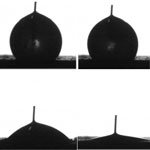 Generally, a surface either loves a liquid drop (then it's called solvophilic - wetting) or hates it (called solvophobic - repulsion) when it lands, depending on several parameters of both the surface - like geometric roughness asperities or ups and downs and chemical composition - and the liquid - like surface tension or tendency of solvation. When water is the liquid the terms hydrophilic and hydrophobic are used respectively for this and for oil similar terms like oleophilic and oleophobic. Advanced material engineering techniques can structure surfaces that allow dynamic tuning of their wettability all the way from superhydrophobic behavior to almost complete wetting - but these surfaces so far only work with high-surface-tension liquids. Just recently, researchers in India have developed a superhydrophobic (where the contact angle between the droplet and the surface is approaching 180 degrees) carbon nanotube (CNT) 'bucky paper' that shows fascinating wetting behavior as a result of an applied electric field, which could be remarkably tuned by changing key solution variables like ionic strength, nature of electrolyte, and pH of the droplet.
Generally, a surface either loves a liquid drop (then it's called solvophilic - wetting) or hates it (called solvophobic - repulsion) when it lands, depending on several parameters of both the surface - like geometric roughness asperities or ups and downs and chemical composition - and the liquid - like surface tension or tendency of solvation. When water is the liquid the terms hydrophilic and hydrophobic are used respectively for this and for oil similar terms like oleophilic and oleophobic. Advanced material engineering techniques can structure surfaces that allow dynamic tuning of their wettability all the way from superhydrophobic behavior to almost complete wetting - but these surfaces so far only work with high-surface-tension liquids. Just recently, researchers in India have developed a superhydrophobic (where the contact angle between the droplet and the surface is approaching 180 degrees) carbon nanotube (CNT) 'bucky paper' that shows fascinating wetting behavior as a result of an applied electric field, which could be remarkably tuned by changing key solution variables like ionic strength, nature of electrolyte, and pH of the droplet.
Aug 12th, 2008
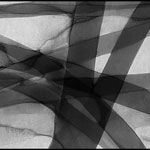 The key to using self-assembly as a controlled and directed nanofabrication process lies in designing the components that are required to self-assemble into desired patterns and functions. Self-assembly reflects information coded in individual components - characteristics such as shape, surface properties, charge, polarizability, magnetic dipole, mass, etc. These characteristics determine the interactions among the components and the whole essence of self-assembly arises from these dynamic properties. In this respect, many self-assembled nanostructures show to be responsive to external stimuli such as temperature, pH, or solvent polarity. An exciting field for nanotechnology researchers is the challenge of extending the scope of nanostructures with stimulus-responsive properties towards the fabrication of 'smart' nanoscale materials. New work by Korean scientists demonstrates that simple addition of small guest molecules triggers reversible structural transformation. The novelty of this research is that, so far, switching of material properties triggered by external stimuli via nanoscale objects had not been realized yet.
The key to using self-assembly as a controlled and directed nanofabrication process lies in designing the components that are required to self-assemble into desired patterns and functions. Self-assembly reflects information coded in individual components - characteristics such as shape, surface properties, charge, polarizability, magnetic dipole, mass, etc. These characteristics determine the interactions among the components and the whole essence of self-assembly arises from these dynamic properties. In this respect, many self-assembled nanostructures show to be responsive to external stimuli such as temperature, pH, or solvent polarity. An exciting field for nanotechnology researchers is the challenge of extending the scope of nanostructures with stimulus-responsive properties towards the fabrication of 'smart' nanoscale materials. New work by Korean scientists demonstrates that simple addition of small guest molecules triggers reversible structural transformation. The novelty of this research is that, so far, switching of material properties triggered by external stimuli via nanoscale objects had not been realized yet.
Aug 11th, 2008
 Our title today refers to the 1960 article by Yuri Artsutanov in Pravda: 'To the Cosmos by Electric Train'. This article is the granddaddy of all 'space elevator' concepts and first to propose the idea that a cable-based transport system could become an alternative to rockets for launching people and payload into space. The single most difficult task in building the Space Elevator is achieving the required tether strength-to-weight ratio - in other words, developing a material that is both strong enough and light enough to support the up to 100,000 km long tether. Thanks to nanotechnology, this material has become available in the form of carbon nanotubes (CNTs). The challenge ahead is to weave these raw CNTs into a useful form - a space worthy climbable ribbon. Assembling carbon nanotubes into commercially usable fibers is still one of the many challenges that nanotechnology researchers are faced with when trying to exploit the amazing properties of many nanomaterials.
Our title today refers to the 1960 article by Yuri Artsutanov in Pravda: 'To the Cosmos by Electric Train'. This article is the granddaddy of all 'space elevator' concepts and first to propose the idea that a cable-based transport system could become an alternative to rockets for launching people and payload into space. The single most difficult task in building the Space Elevator is achieving the required tether strength-to-weight ratio - in other words, developing a material that is both strong enough and light enough to support the up to 100,000 km long tether. Thanks to nanotechnology, this material has become available in the form of carbon nanotubes (CNTs). The challenge ahead is to weave these raw CNTs into a useful form - a space worthy climbable ribbon. Assembling carbon nanotubes into commercially usable fibers is still one of the many challenges that nanotechnology researchers are faced with when trying to exploit the amazing properties of many nanomaterials.
Aug 8th, 2008
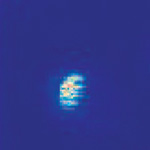 More than half a century ago, Erwin Schroedinger, nobel laureate in physics, claimed that it is 'impossible to carry out experiments on single molecules or atoms'. Today, the detection, tracking and study of single molecules and atoms has become an omnipresent tool in biology, chemistry and physics alike. For example, sequencing DNA one base pair (or letter) at a time currently provides the most likely solution to fulfill the quest for a $1,000 human genome. Nevertheless, observation of a single molecule, especially with standard light microscopes requires a good deal of laboratory skills. This is mostly due to the fact that a single molecule only gives a miniscule amount of detectable signal. In fact, people using light as a probe have relied exclusively on the use of fluorescence, the emission of lower energy light following absorption of radiation at a certain energy. In this scheme, the signal from the molecule of interest can be easily separated from residual excitation light or background fluorescence simply by filtering the detected light spectrally and only detecting the color that is emitted by the molecule. In this way, it is possible to suppress unwanted signals from the billions of other molecules that are in the vicinity of the molecule of interest. As powerful as this approach has been, it also has one major limitation: it is only possible to study molecules that are highly fluorescent, i.e. emit lower energy light with high efficiency. Scientists from the ETH Zurich have recently demonstrated a major step towards the detection and study of single molecules in absorption.
More than half a century ago, Erwin Schroedinger, nobel laureate in physics, claimed that it is 'impossible to carry out experiments on single molecules or atoms'. Today, the detection, tracking and study of single molecules and atoms has become an omnipresent tool in biology, chemistry and physics alike. For example, sequencing DNA one base pair (or letter) at a time currently provides the most likely solution to fulfill the quest for a $1,000 human genome. Nevertheless, observation of a single molecule, especially with standard light microscopes requires a good deal of laboratory skills. This is mostly due to the fact that a single molecule only gives a miniscule amount of detectable signal. In fact, people using light as a probe have relied exclusively on the use of fluorescence, the emission of lower energy light following absorption of radiation at a certain energy. In this scheme, the signal from the molecule of interest can be easily separated from residual excitation light or background fluorescence simply by filtering the detected light spectrally and only detecting the color that is emitted by the molecule. In this way, it is possible to suppress unwanted signals from the billions of other molecules that are in the vicinity of the molecule of interest. As powerful as this approach has been, it also has one major limitation: it is only possible to study molecules that are highly fluorescent, i.e. emit lower energy light with high efficiency. Scientists from the ETH Zurich have recently demonstrated a major step towards the detection and study of single molecules in absorption.
Aug 6th, 2008
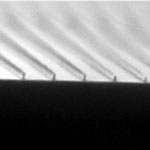 The success of the semiconductor industry has been due in large part to its ability to continuously increase the complexity, and therefore the processing power, of integrated circuits at a given manufacturing cost. Moore?s Law observes that the number of transistors in a computer chip doubles every two years, whilst the cost of making the chip remains the same, due to miniaturization of the components. In order to produce the next generation of computer chips it is necessary to continue to shrink the size of the components on the chip. The miniaturization upon which Moore?s Law rests has been achieved through advances in the photolithographic process used to pattern the components onto to the silicon wafer. A beam of light is projected through a shadow-casting reticule and the light pattern is then directed onto a silicon wafer coated with a photochemically sensitive material, known as a resist. The solubility of the resist is modified by exposure to the light, allowing specific areas of the resist film to be removed, whilst other areas remain as a mask, so that the silicon wafer can be selectively etched, metallized or doped. For many years it has been predicted that the end of photolithography is approaching, and that further miniaturization will require next generation lithography techniques, such as EUV lithography. However, photolithography has proved remarkably resilient, and continues to improve. Unfortunately, whilst the ability of photolithography to pattern small features continues to improve, the industry is beginning to challenge the capabilities of the photosensitive resist.
The success of the semiconductor industry has been due in large part to its ability to continuously increase the complexity, and therefore the processing power, of integrated circuits at a given manufacturing cost. Moore?s Law observes that the number of transistors in a computer chip doubles every two years, whilst the cost of making the chip remains the same, due to miniaturization of the components. In order to produce the next generation of computer chips it is necessary to continue to shrink the size of the components on the chip. The miniaturization upon which Moore?s Law rests has been achieved through advances in the photolithographic process used to pattern the components onto to the silicon wafer. A beam of light is projected through a shadow-casting reticule and the light pattern is then directed onto a silicon wafer coated with a photochemically sensitive material, known as a resist. The solubility of the resist is modified by exposure to the light, allowing specific areas of the resist film to be removed, whilst other areas remain as a mask, so that the silicon wafer can be selectively etched, metallized or doped. For many years it has been predicted that the end of photolithography is approaching, and that further miniaturization will require next generation lithography techniques, such as EUV lithography. However, photolithography has proved remarkably resilient, and continues to improve. Unfortunately, whilst the ability of photolithography to pattern small features continues to improve, the industry is beginning to challenge the capabilities of the photosensitive resist.
Aug 5th, 2008
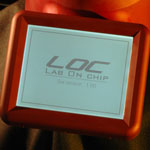 The term biosensing relates to systems that include electronic, photonic, biologic, chemical and mechanical means for producing signals that can be used for the identification, monitoring or control of biological phenomena. The resulting biosensors are devices that employ biological components such as proteins to provide selectivity and/or amplification for the detection of biochemical materials for use in medical diagnostics, environmental analysis or chemical and biological warfare agent detection. Surface plasmon resonance (SPR) has become the technology of choice for label-free detection of proteins and other biomolecules. SPR is based on the excitation of a surface plasmon at the interface between a dielectric and a thin layer of metal, typically gold. Once the sample is covered with the nanostructured gold layer (or another suitable metal), the surface absorbs light at certain wavelength. The absorption maximum is influenced by the refractive index of the fluid at the gold surface. This effect is called localized surface plasmon resonance (LSPR) and it is used for detection of presence of biomolecules, such as specific proteins.
The term biosensing relates to systems that include electronic, photonic, biologic, chemical and mechanical means for producing signals that can be used for the identification, monitoring or control of biological phenomena. The resulting biosensors are devices that employ biological components such as proteins to provide selectivity and/or amplification for the detection of biochemical materials for use in medical diagnostics, environmental analysis or chemical and biological warfare agent detection. Surface plasmon resonance (SPR) has become the technology of choice for label-free detection of proteins and other biomolecules. SPR is based on the excitation of a surface plasmon at the interface between a dielectric and a thin layer of metal, typically gold. Once the sample is covered with the nanostructured gold layer (or another suitable metal), the surface absorbs light at certain wavelength. The absorption maximum is influenced by the refractive index of the fluid at the gold surface. This effect is called localized surface plasmon resonance (LSPR) and it is used for detection of presence of biomolecules, such as specific proteins.
Aug 4th, 2008
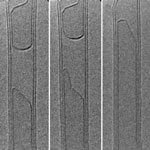 One of the best ways to gain control over synthesis of nanoparticles is to watch it happen. Take carbon nanotubes (CNTs): Synthesis of CNTs is a field that is growing explosively - but there is a lot that nanotechnology researchers don't know about how nanotubes form and grow. While there are a number of in situ characterization methods for nanotube synthesis under development worldwide, each with different strengths and weaknesses, much of the information about the nanotube structure is indirect.
Historically, in situ characterization tools have accelerated progress in synthesis for many advanced materials, and there is widespread recognition that in situ tools have the potential to improve CNT synthesis as well. Ideally one would like to detect individual nanotubes and ensembles as they grow and measure their physical properties while imposing minimal constraints on the synthesis method. In other words, with a good understanding of the synthesis process we would be better able to control the product.
One of the best ways to gain control over synthesis of nanoparticles is to watch it happen. Take carbon nanotubes (CNTs): Synthesis of CNTs is a field that is growing explosively - but there is a lot that nanotechnology researchers don't know about how nanotubes form and grow. While there are a number of in situ characterization methods for nanotube synthesis under development worldwide, each with different strengths and weaknesses, much of the information about the nanotube structure is indirect.
Historically, in situ characterization tools have accelerated progress in synthesis for many advanced materials, and there is widespread recognition that in situ tools have the potential to improve CNT synthesis as well. Ideally one would like to detect individual nanotubes and ensembles as they grow and measure their physical properties while imposing minimal constraints on the synthesis method. In other words, with a good understanding of the synthesis process we would be better able to control the product.
Aug 1st, 2008
 The Office of Technology Assessment at the German Parliament (TAB) has released a massive 266-pages report on Converging Technologies (CT). The report's author, Christopher Coenen, analyses CT-related political initiatives and activities in the USA, European Union and Germany as well as some other countries. Utopian and dystopian long term visions for Converging Technologies and Human Enhancement offer clear potential for social conflict. Most of the discussions have so far been limited to academic circles, but some have reached political relevance. These focus on the relationship between nature and technology and between the grown and the artificial. Differences in views on what it means to be human are central to these disputes. The criticism against promoters of convergence visions is that the feasibility is doubtful and that the views are inspired by political and ideological motives. The report outlines options for actions and the possible requirements for research and he ends his report by suggesting options for research funding.
The Office of Technology Assessment at the German Parliament (TAB) has released a massive 266-pages report on Converging Technologies (CT). The report's author, Christopher Coenen, analyses CT-related political initiatives and activities in the USA, European Union and Germany as well as some other countries. Utopian and dystopian long term visions for Converging Technologies and Human Enhancement offer clear potential for social conflict. Most of the discussions have so far been limited to academic circles, but some have reached political relevance. These focus on the relationship between nature and technology and between the grown and the artificial. Differences in views on what it means to be human are central to these disputes. The criticism against promoters of convergence visions is that the feasibility is doubtful and that the views are inspired by political and ideological motives. The report outlines options for actions and the possible requirements for research and he ends his report by suggesting options for research funding.
Jul 30th, 2008
 Generally, a surface either loves a liquid drop (then it's called solvophilic - wetting) or hates it (called solvophobic - repulsion) when it lands, depending on several parameters of both the surface - like geometric roughness asperities or ups and downs and chemical composition - and the liquid - like surface tension or tendency of solvation. When water is the liquid the terms hydrophilic and hydrophobic are used respectively for this and for oil similar terms like oleophilic and oleophobic. Advanced material engineering techniques can structure surfaces that allow dynamic tuning of their wettability all the way from superhydrophobic behavior to almost complete wetting - but these surfaces so far only work with high-surface-tension liquids. Just recently, researchers in India have developed a superhydrophobic (where the contact angle between the droplet and the surface is approaching 180 degrees) carbon nanotube (CNT) 'bucky paper' that shows fascinating wetting behavior as a result of an applied electric field, which could be remarkably tuned by changing key solution variables like ionic strength, nature of electrolyte, and pH of the droplet.
Generally, a surface either loves a liquid drop (then it's called solvophilic - wetting) or hates it (called solvophobic - repulsion) when it lands, depending on several parameters of both the surface - like geometric roughness asperities or ups and downs and chemical composition - and the liquid - like surface tension or tendency of solvation. When water is the liquid the terms hydrophilic and hydrophobic are used respectively for this and for oil similar terms like oleophilic and oleophobic. Advanced material engineering techniques can structure surfaces that allow dynamic tuning of their wettability all the way from superhydrophobic behavior to almost complete wetting - but these surfaces so far only work with high-surface-tension liquids. Just recently, researchers in India have developed a superhydrophobic (where the contact angle between the droplet and the surface is approaching 180 degrees) carbon nanotube (CNT) 'bucky paper' that shows fascinating wetting behavior as a result of an applied electric field, which could be remarkably tuned by changing key solution variables like ionic strength, nature of electrolyte, and pH of the droplet. 
 Subscribe to our Nanotechnology Spotlight feed
Subscribe to our Nanotechnology Spotlight feed





